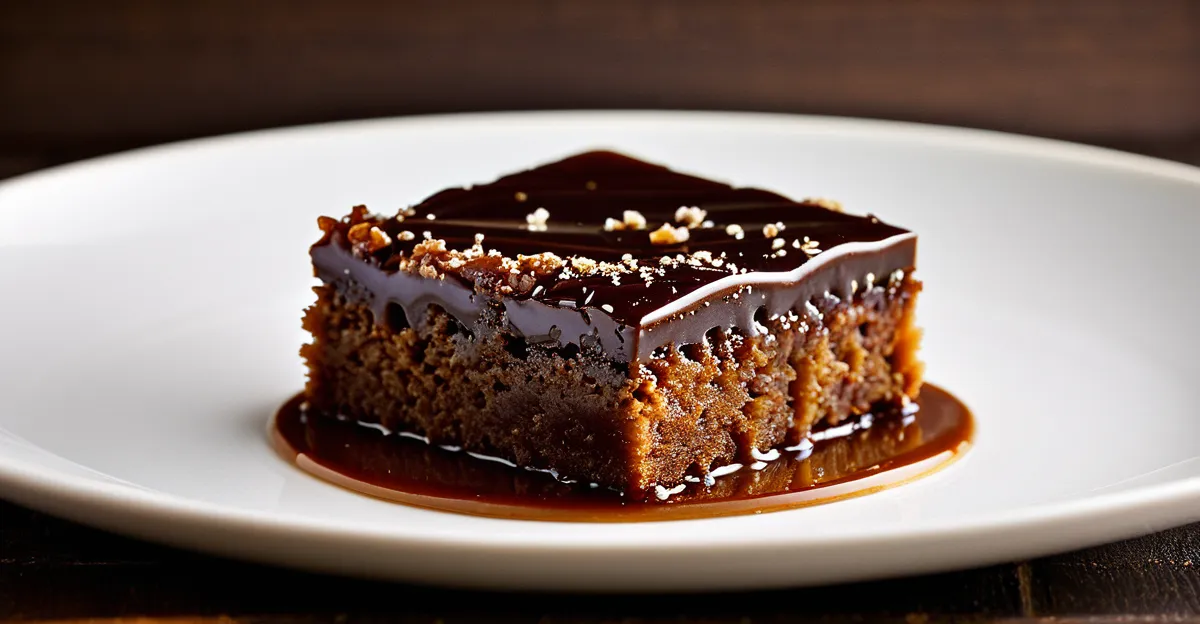Essential Ingredients for Sticky Toffee Pudding
Understanding the sticky toffee pudding ingredients is crucial for success. The pudding basics start with flour, sugar, butter, eggs, and—most importantly—dates. Dates provide natural sweetness and moisture, forming the cake’s rich, sticky texture. Using Medjool dates is often recommended due to their softness and enhanced flavor, but other varieties like Deglet Noor are viable substitutes if properly soaked first.
Flour acts as the structure base, while baking powder helps the pudding rise, giving it lightness despite its dense appearance. Butter and sugar create richness and moisture, essential for the sticky toffee pudding’s characteristic tenderness. Eggs bind the mixture and contribute to aeration.
Also to discover : How can you prepare a deliciously creamy bread and butter pudding?
Possible substitutions appear in dietary or availability constraints. For instance, replacing butter with margarine or coconut oil works, though subtle flavor changes may occur. Similarly, if fresh dates are unavailable, a well-drained date paste or finely chopped dried dates soaked in warm water can maintain the desired consistency.
Selecting ripe, plump dates enhances the pudding’s depth of flavor and texture. Overly dry or underripe dates risk a less moist, less flavorful result, so choosing quality ingredients is an indispensable starting point for this beloved dessert.
Have you seen this : How can you make a traditional Welsh rarebit at home?
Preparing the Sticky Toffee Pudding Batter
Crafting the sticky toffee pudding recipe batter begins by creaming softened butter and sugar until pale and fluffy. This aerates the mix, crucial for a light sponge cake base despite the pudding’s dense reputation. Next, beat in eggs one at a time, ensuring full incorporation to prevent curdling.
Sift flour and baking powder together, then fold gently into the wet ingredients to maintain airiness. Carefully incorporating the soaked dates with their syrup adds moisture and sweetness, enriching the batter. Using the soaking liquid also boosts tenderness and flavour depth.
To achieve a moist pudding texture, avoid overmixing, which can develop gluten and cause toughness. Mixing just until ingredients combine preserves softness. Common mistakes include adding cold eggs straight from the fridge or failing to fully cream butter and sugar, both leading to uneven texture.
For consistency, ensure dates are well drained but not dry before folding. This balances moisture and prevents sogginess. Following these steps yields a smooth, velvety batter that bakes into the perfect sponge cake base for your sticky toffee pudding.
Making the Toffee Sauce
Creating the sticky toffee pudding sauce hinges on mastering the perfect toffee sauce recipe. The essential ingredients include brown sugar, unsalted butter, double cream, and a pinch of salt. Precise measurements typically call for equal parts butter and sugar—about 100g each—combined with 150ml of cream to achieve the signature smooth, rich texture.
To make a reliable caramel sauce, begin by gently melting the butter and sugar together over medium heat until the mixture bubbles and turns a deep amber colour. Gradually stir in the cream, which should be added slowly to prevent separation or curdling. This step is critical; adding cream too quickly can cause the sauce to seize or become grainy.
Maintaining consistent heat and stirring continuously delivers a glossy, luscious sauce that complements the dense pudding base. Avoiding excessive boiling ensures the sauce remains velvety and doesn’t burn. If graininess occurs, whisking vigorously or passing the sauce through a sieve can improve texture.
Using this sticky toffee pudding sauce elevates the dessert, marrying sweet, buttery flavours with moist sponge cake for an indulgent finish that is both classic and comforting.
Baking and Assembling the Pudding
Ensuring proper baking is vital to perfect the sticky toffee pudding method. Set your oven to 180°C (350°F) for consistent heat. Bake the batter in a greased, ovenproof dish for 30–40 minutes until the top is firm and a skewer inserted comes out clean. This confirms doneness and avoids undercooked, soggy pudding.
To promote even baking, avoid overcrowding the oven and place the dish centrally on the rack. If edges bake faster than the centre, loosely tent the pudding with foil midway through baking to prevent overbrowning while maintaining moisture.
Assembly involves immediately pouring warm sticky toffee pudding sauce over the hot sponge, allowing it to soak in. This step enhances depth of flavour and intensifies the classic moist texture. Using the right ratio of sauce to sponge ensures balance without sogginess.
For a visually appealing presentation, consider baking in individual ramekins or using a shallow dish for quicker, more even cooking. Once assembled, serve promptly to enjoy the pudding at its luscious best, as the sauce thickens and sets with cooling.
Serving Suggestions and Storage Advice
Serving sticky toffee pudding at its best means pairing the warm, gooey cake with complementary accompaniments. Popular options include vanilla ice cream, clotted cream, or additional sticky toffee pudding sauce. The contrast between hot pudding and cold ice cream enhances both texture and flavor, creating an indulgent experience. For a lighter touch, softly whipped cream offers richness without overpowering.
Presentation can elevate the classic dessert. Consider serving individual portions in ramekins or on elegant dessert plates with a drizzle of toffee sauce artistically pooled around. Adding a sprinkle of chopped nuts or a fresh mint leaf adds visual appeal and subtle texture.
To store leftovers, allow the pudding and sauce to cool completely, then cover tightly and refrigerate for up to 3 days. Reheating gently in the microwave or oven with a splash of cream or milk restores moisture, preventing dryness. Avoid overheating, as this can toughen the sponge and cause the sauce to split.
By following these serving sticky toffee pudding and storage tips, you maintain the dessert’s signature moistness and deep flavors, ensuring every bite remains delightful.
Helpful Tips, Substitutes, and Troubleshooting
When preparing sticky toffee pudding, several sticky toffee pudding tips can ensure success. A common mistake is overmixing the batter, which toughens the sponge; mix only until ingredients combine to keep it moist. Another frequent issue is the sauce splitting; to prevent this, add cream gradually and maintain moderate heat during the toffee sauce recipe process.
Substitutions are often necessary. If butter is unavailable, margarine or coconut oil serve as reliable replacements, with slight flavor differences. For egg allergies, flaxseed meal mixed with water or commercial egg replacers can bind the batter effectively. Dates remain essential; however, if fresh ones are missing, soaked dried dates or high-quality date paste provide similar moisture and sweetness.
Addressing questions such as “Can the pudding be vegan?” is achievable by modifying these ingredients thoughtfully. Likewise, uneven baking can be tackled by placing the dish centrally and monitoring for hot spots, tenting with foil if needed.
In short, paying attention to mixing, heat control, and ingredient choices resolves most challenges, making the sticky toffee pudding an approachable delight for varied needs.






